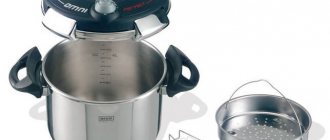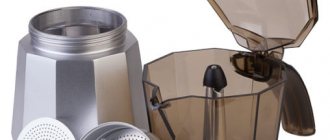Kinds
Depending on the area of application, jigsaws are divided into two main classes - household and professional. Regardless of the type, the design of the tool is equipped with a saw mounted in a special frame.
For home use, small devices for cutting materials are used. These jigsaws can be manually or electrically controlled. Each type of tool has its own technical and design characteristics.
Manual
This tool is of the simplest type. It consists of a frame, a saw blade with clamps and a handle. A manual jigsaw is used mainly for small jobs that require a certain precision of cutting.
The bottom tool allows you to perform artistic cutting of the material. But using it requires patience and skill. The sawing speed of a manual device is low, so it is not practical to use it for large volumes.
Electric
A jigsaw powered by an electrical network is considered the most convenient tool. It allows you to quickly and efficiently cut any material. The depth of the cut mainly depends on the power of the device. For modern devices, this figure can range from 200 to 900 watts.
Electric jigsaw 620 Watt
Low-power jigsaws are suitable for household use. They have a relatively low cost and do an excellent job of sawing wood products up to a depth of 50 millimeters, and metal ones - 23 millimeters. More complex work requires the use of tools with the highest technical parameters.
Jigsaw device
The following short introduction was compiled to answer the question “What is a jigsaw” and “How does it work.”
Since this is only a superficial analysis of the tool, we will not dive into the technical depths, but will only touch on the external functionality. We assure you that the information provided will fully clarify the general understanding of the concept of the device and form a clear picture of the principle of its operation. First of all, you should pay attention to the shapes of jigsaws. They can be staple-shaped or straight with a mushroom-shaped handle. The first option is the most common and very convenient, but for the sake of fairness it is worth saying that working with a mushroom-shaped handle can be quite comfortable (especially in figured cutting).
Regardless of the shape of the handle, each jigsaw has a start button and its lock (for operation without holding). Also, any device of this type has a sole, which can be stamped or cast (on more expensive models). For miter cuts, the sole can be tilted using a key or lever installed on professional devices. Saw blades, making an average of 50 strokes per second, are installed in a special clamp, which can be a block, screw or quick-clamp.
Most modern models are equipped with a pendulum function (to speed up cutting), the regulator of which is located on the left side of the body, next to the file. If we look at the structure of a jigsaw in more detail, we will notice that some models may be equipped with a backlight, a dust collector, a laser pointer and other useful devices. We described these and other functions in detail in a separate article.
For more experienced users who understand the structure of power tools, the following jigsaw diagram has been laid out. The model of a domestic manufacturer presented in analysis clearly demonstrates all the components of the “filling” of most standard devices.
Nuances of an electric jigsaw
Modern manufacturers produce various models of jigsaws. The design of any type of tool consists of the following basic elements:
- Cutting blade. All electric jigsaws are equipped with a special file, which is used to cut the material. The processing process is carried out due to the rapid reciprocating movements of the cutting element. Moreover, depending on the model, the device makes from 43 to 58 revolutions per second.
- Support sole. This design detail ensures cutting accuracy. For most manufactured electric jigsaws, the guide plane rotates at any convenient angle up to 45 degrees. Some models have a fixed slope value.
- Engine. An electric tool is necessarily equipped with a special driving system that drives the rotating mechanism. The greater the power of the device, the higher its operational capabilities.
- Holder. This element allows you to keep the tool in the correct position during the entire working process.
Some models of electric jigsaws have additional equipment. This could be a backlight or devices for automatic chip removal. Many tools have cut regulators, which make it possible to independently set the rotation speed of the cutting element for each individual type of material being processed.
Description of the tool
Based on the principle of operation, a jigsaw can be compared to a regular saw. But it is designed to make figured and through cuts, and with the help of a saw only straight rough cuts are made. The jigsaw frame, shaped like a bow saw, allows you to make precise deep cuts from the end of the material.
The special design of this tool allows you to cut from the inside of the workpiece, making it possible to make through cuts.
A jigsaw is used to process a variety of materials - wood, non-ferrous and soft metals, plastic, ceramic tiles.
There are two types of jigsaws - manual and electric.
Hand jigsaw
A hand jigsaw is a saw blade clamped into an arc-shaped frame. The tool is equipped with a handle. The file reaches 130 mm in length and is attached to the handle with the teeth down. The saw element must be taut. If the blade is tensioned and secured correctly, the instrument will produce a subtle sound when operating. Without proper tension, the file will quickly break.
Despite the fact that many consider it outdated, because there are modern electric ones, it has a number of advantages. However, as well as shortcomings. The pros and cons of the tool are shown in the table:
Advantages:
- suitable for beginners and children;
- affordable price compared to an electric jigsaw;
- compactness;
- A hand jigsaw is indispensable when you need to make intricate wooden patterns. Only with its help is it possible, having reached a certain point, to radically;
- change the cutting angle;
- develops fine motor skills and perseverance.
Flaws:
- small frame size;
- saw blades quickly fail;
- The cutting process is slow.
Thus, hand tools have only three disadvantages and many advantages.
In order not to make a mistake in choosing a manual jigsaw, you should pay attention to the following points:
- The material from which the frame is made. It must be durable, preferably metal. With force, the material should bend just a little. Ideally it should be steel or titanium.
- When purchasing, you should try to squeeze the ends of the frame - if they almost meet, it is better to refuse the purchase.
- Choose a flat frame. But before that, check it for elasticity, as described in the previous paragraph.
- It is important to pay attention to the handle - it should be comfortable, made of wood.
- The fastener that connects the file to the frame should be convenient and fixed without the help of pliers.
Jigsaw
The main advantage of a jigsaw is its versatility. Due to the fact that a wide range of saw blades are produced for it, it is used for working on wood, plastic, and soft metals. Files rarely break. The cutting depth reaches 1.35 m, due to this the speed of work is accelerated compared to a mechanical tool.
The disadvantages include its risk of injury, so it is not suitable for children. The power tool has a short blade stroke, so it cuts thick materials slowly. And also, due to the thicker canvas compared to mechanical, it does not allow for very small patterns.
Electric jigsaws are divided into 2 groups:
- Household. They have a power of up to 550 W. Suitable for deep cutting, up to 45 mm, soft materials - plywood, plastic. And for working with metal – here the cutting depth is up to 4 mm. Suitable for household and small finishing work.
- Professional. Usually equipped with a pendulum mechanism, they have a power of up to 900 W. The tool can be used in both vertical and horizontal planes. It has a high operating speed and allows you to make deep cuts with a minimal percentage of chips. Designed for long-term, large-volume work.
A wide range of saw blades are sold for jigsaws:
- T-shaped shank, or “Boshevsky” - universal, suitable for almost all jigsaws, for example, Bosch, Makita, Skill, Metabo;
- with a U-shaped shank - the second most popular. Suitable for tools with screw and block clamps;
- shank from Makita - only for tools from this company;
- Bosch shank - only for older Bosch tools. Rarely found in stores.
Files also differ according to the type of material being processed:
Different types of files for an electric jigsaw
- For the tree. There are several types of files for wood carving using a jigsaw:
- saw blades for quick cutting. They have a long blade with large teeth and a large opening width;
- for a clean cut. They have medium-sized teeth and a small set;
- for figured cutting. This is a narrow canvas with small teeth and a beveled back side.
- For metal. They are made of durable metal, have small teeth, and a wavy pattern.
- For polymer materials. They only have small teeth.
- Universal.
General rules and operating features
The quality of cutting products with both a manual and electric jigsaw depends on its correct use. Each type of tool has its own operational characteristics that should be taken into account during the work process.
Hand jigsaw
There are several points to consider when cutting material with a simple jigsaw:
- All movements of the tool must be vertical. The jigsaw should be held straight, otherwise the saw will quickly deteriorate, and the cutting process itself will be somewhat delayed. Movements are performed in only two directions - up and down.
- Do not press hard on the tool. Excessive force can significantly reduce the quality of the cut. You need to lower the jigsaw with gentle and light pressure, and when lifting it, it is recommended to be completely free.
- When cutting out a design, only the blade is rotated. The jigsaw should remain in its original position. In this case, it is necessary to hold the tool with one hand, and with the other to ensure the rotation of the material according to the intended sketch.
The manual jigsaw should not be pressed too hard.
It is recommended to place the cutting blade at the edge of the cutting line. This will ensure the accuracy of cutting curly lines.
Electrically controlled jigsaw
Using a jigsaw requires compliance with its own rules, which will help you cut the material efficiently:
- To put the tool into action, you need to connect it to the network and press the start button.
- Always press the support plate against the material while cutting. This will allow you to cut the canvas exactly along the intended line.
- The support bar must always be perpendicular to the material being processed. Incorrect placement of the guide sole can lead to damage to the product and the cutting element itself.
- When cutting the fabric into shapes, you should use a minimum of effort. Any excessive pressure on the tool can damage the workpiece.
- If it is necessary to make cuts at an angle, you must first adjust the support sole.
- When working with an electric jigsaw, you should take short breaks of ten minutes every half hour. This action will help protect the device from overheating and will greatly extend its service life.
When using an electric tool for the first time, you should set the speed to low. This will allow you to feel how the jigsaw works and get used to it.
How to insert a file into a jigsaw
With intensive use or when working with different types of materials, it often becomes necessary to replace the saw blade. The types of saw blade mounts may differ on different models of jigsaws. To give the most detailed answer, we will consider each type of clamp separately. Block clamp
. Perhaps the simplest fastening of a file in a jigsaw, most often found in inexpensive copies. Consists of a block with two screws installed on the front side of the tool. It is universal, as it can fix saw blades with any shanks. When tightening this fastener, be careful and ensure that the file is level. To do this, tighten the screws evenly, a little each, and ideally check the evenness of the installed blade with a square.
Screw clamp
. A more convenient and reliable mount, although it has only one screw installed on the side. To figure out how to change a file on a jigsaw with this type of clamp, you don’t need to be a rocket scientist. All that is required is to loosen the fastening element with a screwdriver or wrench, remove the old file, install a new one and screw it back. The main thing is not to tighten the screw too much, otherwise the blade may “play” during operation.
Quick-release fastening
. The most convenient clamp for a file, found on more or less expensive models. Does not require a wrench or screwdriver and is only suitable for blades with certain types of shanks (depending on the tool model). To install a file, just pull back the special lever with your finger and insert a new blade into the groove. There are several types of levers: frontal, lateral and radial (demonstrated in the next video). Now that you know how to properly insert a file into a jigsaw, it’s time to move on to other, more practical things.
Electric jigsaw technology
Using a jigsaw, you can cut through various materials without much effort. But still, the quality of work requires a special approach to each type of canvas.
Selection and preparation of material sheet
A jigsaw can be used to cut blades of varying densities. The material for cutting can be wood products, plastic or tiles. You can also cut metal using a power tool.
Workpieces for sawing must have a homogeneous structure. If wood panels are used, the presence of knots or metal elements such as staples, nails or screws should be excluded. Wood blanks are used for cutting only in dried form. To cut out a design, it is recommended to select a material with a flat surface.
The canvas selected for processing is fixed in a horizontal position. Cutting lines are drawn on its surface using a pencil.
Cutting down a tree
To work with wood materials, special files with fairly large teeth are installed in the tool - from 2 to 6 millimeters. The more complex the shape of the cut, the smaller their size should be.
Straight cutting of wooden panels can be carried out at the highest speeds. For more precise cutting of products, the rotation speed of the cutting element can be reduced.
To work with wood, you will need files with large teeth.
To increase the speed of material processing, it is recommended to turn on the pendulum stroke. It is used if the quality of the cut is not particularly important.
You should cut smoothly without much effort. During operation, the tool must be pressed evenly against the surface of the workpiece.
Metal processing
In this case, the cutting blade should have small teeth, the distance between which does not exceed 1-2 millimeters. During the process of sawing metal blades, the pendulum stroke is completely switched off. Material processing is performed at the lowest speed.
You need to move the jigsaw very slowly, avoiding any pressure on the tool. Before processing, the material is fixed so that the cut line is as close as possible to the support.
We cut plastic
A cutting blade for plastic workpieces is no different from a saw for metal. During the sawing process, the minimum position of the pendulum stroke is established. For smoother cuts, turn it off completely.
Plastic processing is performed at low speeds. The tool is pressed tightly against the blade and moves smoothly along its surface.
Sawing tiles
Such products require a special file with abrasive material applied in place of the teeth. In this case, the pendulum stroke is not used. The entire work process is carried out at the maximum set speed.
Cutting tiles with an electric jigsaw is used only when small cuts are necessary. This is due to the fact that saws deteriorate quickly and require frequent replacement.
How to prepare the instrument
It will be useful for beginners in this business to learn how to work with a jigsaw correctly, but first we will talk about preparing the tool for use:
- The first step is to carefully study the operating instructions for the electrical appliance.
- Visually assess the appearance of the device for damage: cracks, chips, cable integrity.
- Select a saw according to the quality of the material you will be working with.
- Select the appropriate mode. Here are some examples: to work with soft trees, you need to set the maximum speed and use a pendulum mechanism. If you need to cut a sheet of chipboard, then leave the cutting blade at a high speed, but the pendulum mechanism will be superfluous here because it will contribute to the appearance of chips.
To avoid injury, you must adhere to safety precautions when working with a jigsaw: wear safety glasses and gloves.
Features of sawing
An electric jigsaw easily copes with straight-line sawing. Also, using the tool, you can make various cuts at an angle and cut an oval or circle in the workpiece. Each type of cut has its own characteristics.
Round and oval elements
The outline of the figure is applied to the prepared canvas. After this, using a drill, a hole is made in the workpiece into which the cutting element of the jigsaw is installed.
The cutting process begins and ends at the hole made. If you drill several holes, then a circle or oval can be cut out in parts.
Straight-line
An electric jigsaw is the easiest to handle this type of cut. Markings are made on the canvas along which the tool is smoothly guided.
For straight cutting of material, you can set the highest speed. It is recommended to secure the workpiece before starting work.
At an angle
Such cutting of the material is carried out by first installing the sole at the required degree of slope. After fixing the required angle, the same actions are performed as for straight cutting.
Sawing with a jigsaw at an angle
Tips for using a jigsaw
Our tips will help you learn how to cut correctly with an electric jigsaw:
- Stronger doesn't mean better. This refers to the force of pressure on the device during operation. This style of sawing will cause the tool to break. Correct use of a jigsaw involves firmly holding the device in your hand and pointing the saw in the desired direction .
- When processing thin sheets of metal, vibration occurs. To eliminate it, you need to reduce the speed of the saw and place a sheet of plywood under the metal. When sawing such material, a large load is placed on the jigsaw motor, so you should periodically turn off the device to allow the motor to cool down.
- For high-quality and accurate cutting, you need to secure the workpiece.
- To avoid chipping on the bottom or top side of, for example, laminated chipboard, you need to choose the right saw or turn the board the right way. But if there is a need to get a cut without chipping on both sides, then you need to put a small piece of the same board on top of the chipboard and start sawing. The chip will remain on the additional material, and the required slab will have a clean cut.
- To prevent chips from appearing, you can resort to this trick: stick tape along the markings.
- When sawing such fragile material as plastic, we recommend installing a saw with medium-sized teeth, turning off the pendulum mechanism and setting the saw to the lowest speed.
- If it is necessary to cut out a part with a closed contour, but it is impossible to start sawing from the edge, then drill a hole in a convenient place, insert an electric jigsaw into it and continue working.
- To cut plexiglass or non-ferrous metals, the saw must be treated with machine oil.
We hope that our tips will help you, and if you have any additional questions about how to properly use an electric jigsaw, you can always watch the training video.
As it turns out, a jigsaw is an indispensable tool in everyday life that even a beginner can handle. And with the right approach and work experience, you can not only make straight cuts, but also cut out various shaped details for decoration.
The nuances of straight cutting
To cut material in a straight line, a guide rail or rip fence is often used. Such additional devices greatly facilitate the work process and improve the quality of the cut.
Guide rail
This auxiliary device is a metal ruler containing a groove for installing a special sole and a jigsaw.
Before starting work, the material is marked. After that
Initially, the material is marked. After this, a tire is fixed along the line. The electric tool moves easily along the device, making precise and even cuts.
Rip fence
All models of electric jigsaws have a special hole in the support base for installing a special rip fence. The device can be purchased at a specialty store, but is often included with the tool.
The parallel fence ensures even cutting of various workpieces. But the use of such a device requires certain conditions:
- when moving the tool along the canvas, it is necessary to press the sole firmly enough;
- The surface on which the device will move must be absolutely flat.
The structure of the rip fence must be sufficiently strong and robust. Installing the device on devices that can move to the side when cutting is not recommended.
Guide rail for jigsaw
auxiliary devices plunge-cut saw
The jigsaw guide is a simple device, at first glance, similar to a large metal ruler or rule. The main difference between the tire and the above devices is a special groove along which, like on rails, the sole with a jigsaw mounted on it moves. Most guides have rubberized strips that prevent sliding on the surface of the material, and for additional fixation, they are attached with small clamps. The average length of such devices is from 1.5 to 3 meters, and can be increased by another, similar ruler, using an adapter.
modern manufacturers
The most common breakdowns and methods for their prevention
High-quality jigsaws have a fairly long service life. But even the best models can suddenly fail. The most common tool parts that fail are:
- Start button. Basically, such a design element stops working when metal dust gets into the housing. To eliminate the problem, you need to perform simple cleaning using a special vacuum cleaner. With prolonged use of an electric jigsaw, the button fails as the mechanism wears out.
- Mechanical connections. Most often the rod gets damaged. This element is most affected by mechanical loads. The locking device, which is connected to the rod, often fails. This is all due to dust getting inside the housing while cutting various materials. But if the instrument has a high-quality body, then such problems practically do not arise.
- Engine. Stopping the electric driving mechanism can occur when the stator or rotor burns out. Also, sometimes the problem occurs due to wear on the notch on the shaft. In order for an electrical device to work long enough, its power should always be taken into account before setting certain tasks.
Improper use of the tool leads to high loads, and subsequently failure of the mechanism. When cutting for a long time, you should always periodically let the jigsaw cool down a little.
Some features of the process
Initially, you need to choose the right file
for a jigsaw. The variety of files allows you to choose the option that will correspond to both the material of the original workpiece and the final desired result.
In general, a jigsaw can be either pendulum or conventional. In the second option, for an even cut, the blade must be moved clearly vertically, cutting the material upward. Due to the high speed generated, the blade wears out more slowly.
When working with a pendulum tool, the principle is essentially the same, only the preferred material for processing is soft wood or plastic; difficulties may arise with steel.
In order to make a straight cut, you need to choose a wide blade; it is better if the jigsaw has a “Smooth start” function, which will allow you to avoid sudden movements at the initial stage. If you need to cut a round hole, you first need to drill the original version, into which the necessary file is inserted. The cutting itself is carried out according to the markings. If the original version cannot be cut, then a mortise sawing method
. To do this, the jigsaw is tilted at an angle until it comes into contact with the material, this allows you to make a through hole, after which you can do what is necessary according to the markings.
We advise you to study - The combination and use of beige color in the interior
It is allowed to cut along the edge of the workpiece, but you must make sure that it is initially even, otherwise the jigsaw will cut crookedly. If the edge is uneven, then only correct marking can correct this.
When working with thin wooden sheets, there is a risk of chipping. To prevent this, the sheet should be placed face down
.
The names speak for themselves. In the first case, the panels are installed vertically, the beam mounted on the guides acts as a bracket. The ability to rotate it to a right angle allows you to saw off material in any plane. The horizontal version requires the presence of a table for sawing, the mechanism itself and a carriage that ensures the movement of the file along.
Safety precautions
A jigsaw is one of the tools that is fairly easy to use. But still, the presence of a sufficiently sharp cutting element requires compliance with certain safety rules:
- Cutting any materials should be done on a flat, stable surface with the blade first secured. In this case, cutting parts in midair is completely eliminated.
- The workpieces should be cut at a distance of at least 40 centimeters from the eyes. For protection, it is recommended to use special glasses.
- Before work, you should make sure that the file and other parts adjacent to it are firmly fixed.
- Before connecting the jigsaw to the network, you must check the integrity of the electrical cable.
- The handle of the cutting device must be securely fastened. Otherwise, the tool may slip and cause injury.
When cutting workpieces from various materials, you should always take into account the technical capabilities of the tool. Proper use of a jigsaw and compliance with all safety rules during its operation will allow you to cut any part according to the intended sketch without any problems.
Stages of work
The work of cutting wood with a jigsaw follows a certain pattern, several stages are followed.
Preparatory
We start by inspecting the plywood - it should be smooth, without knots or nicks. It should be dry, without detachments and swelling.
Then they create a sketch of the work - the stencil is attached with tape or buttons to the surface. Punctures are made at the beginnings and ends of lines, at key points and intersections. Complex designs and patterns are transferred to plywood through copying.
When transferring the pattern, the direction of the fibers should be taken into account - the cuts should be perpendicular to them.
Sawing with a hand jigsaw
A hand jigsaw is held straight by the handle, positioning the file perpendicular to the surface. When working, do not press the tool hard on the surface - the pressure should be minimal. Movements should be smooth, effortless - the instrument sinks down almost under its own weight. When the jigsaw moves upward, sawdust is released, so you should not bring the surface close to your face.
Basic concepts needed to get started with a hand jigsaw.
Sawing with a jigsaw
Work occurs according to certain rules:
- the saw blade is attached to the switched off tool;
- before work, the tool is set up - the frequency and amplitude of movement of the blade is selected;
- sketches are attached at eye level. the workplace must be equipped so that your arms and back do not become numb when working;
- cut out the outline of the product;
- move the jigsaw smoothly, without strong pressure or jerking;
- for through cuts, holes are made with a drill and after that we insert a jigsaw file into it;
- for cuts at an angle, the jigsaw platform is shifted to the desired angle;
- To cut a circle, turn off the pendulum stroke, drill a hole for the file and work using a stop compass.
Working with a jigsaw is dangerous. For beginning craftsmen, simple plywood projects are suitable.
How can you cut metal tiles?
It is the presence of protective layers and the relatively small thickness of the sheet that requires the use of a special cutting tool. To cut the surface of a metal tile into pieces with the required dimensions and shape, you can use the following equipment:
- jigsaw;
- scissors for working with metal;
- hacksaw with fine teeth;
- electric nibblers;
- special circular saw with carbide teeth.
Nibblers are designed for straight and shaped cutting of sheet steel up to 2.0 mm; when cutting sheet metal, they do not deform or bend the cut edge of the sheet.
Nibblers are used when fast curved cutting of material is required, without heating the metal. They are small in size and convenient for work. A special holder allows you to rotate the scissors as needed when cutting, which speeds up the work.
Conventional metal scissors are used less frequently; they can be used when it is necessary to cut a small piece of sheet metal. Their use is not so desirable, since after cutting, uneven edges may remain.
A hacksaw for metal is also used for cutting, but it only allows you to make straight cuts. There are a lot of files that are suitable specifically for working with sheets of metal tiles, but this process is very lengthy and complex. Hand saws can be used only when cutting a small part of the material is required; a hacksaw is not suitable for large areas.
By following these simple rules, you can quickly and efficiently cut sheets of metal tiles of the required size.
Every man, being a true owner, must not only have repair tools in his arsenal, but also be able to use them in practice. We will talk about one of the modern tools, namely the jigsaw. Let's figure out what kind of device this is and how to work with it.
An electric jigsaw is designed for cutting
various sheet materials. Depending on the purpose, jigsaws are:
- professional;
- semi-professional:
- household
The differences lie in the technical characteristics and functionality of the tools.
Before you learn how to use a jigsaw, you need to familiarize yourself with its structure. The tool consists of:
- Aluminum housing.
- Electric motor. A powerful device will be able to cut thicker and stronger material.
- Gearbox covers.
- Pendulum control buttons. The pendulum mechanism allows you to make an accurate cut of materials with low density (soft wood, plywood, foam).
- Covers and brackets that ensure safe operation.
- Support roller for guiding the saw.
- Chip blower regulator.
- Regulator of the number of saw strokes, on which the speed of its movement depends.
- Plate tilt regulator. It allows you to cut wood at an angle of 15, 30, 45 and 90 degrees.
- Laser guide. Allows you to adhere to the drawn cutting line.
- A quick-release chuck that performs the functions of a saw.
- A battery, thanks to which you can cut with a jigsaw for some time without connecting to the network.
Components of a jigsaw
The correct use of this tool also depends on the owner’s knowledge of the composition of the electric jigsaw. Since Bosch released its first copy of this multifunctional device into the world in 1944, its components have undergone many changes, but its basic design has remained unchanged. So, a jigsaw has the following components:
- gearbox (its body must be made exclusively of metal, since the rubber body calls into question the strength of the tool, as it impairs heat transfer);
- sole (the best option for the sole material is cast metal, because some jigsaws have a plastic plate, which does not have a good effect on the quality of work);
- motor housing (a jigsaw is considered good if this particular part is made of the highest quality, strongest material, because this is where the motor is located);
- lever.
We advise you to study - Which paint is best to use for the ceiling











